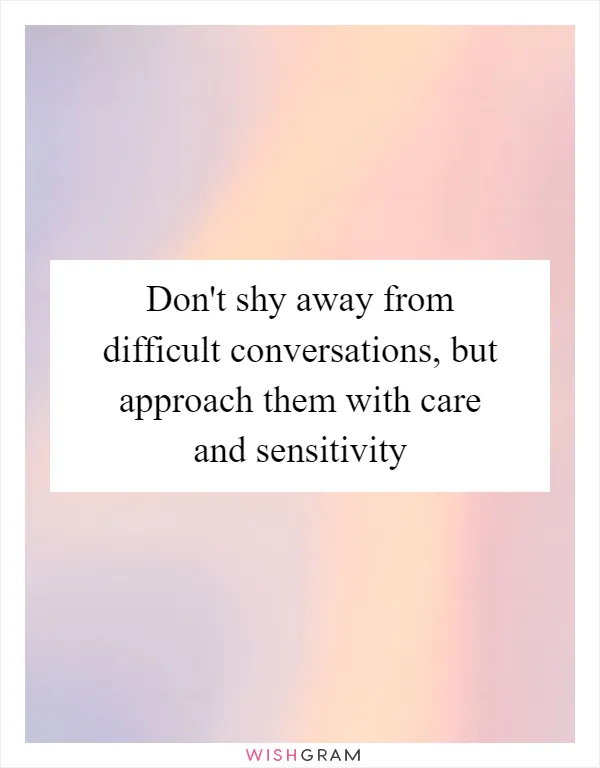Don't shy away from difficult conversations, but approach them with care and sensitivity
Difficult conversations are never easy, but avoiding them can often lead to more problems in the long run. It's important to address sensitive topics with care and sensitivity, as this can help foster understanding and resolve conflicts in a respectful manner.
When approaching a difficult conversation, it's crucial to choose the right time and place. Find a quiet and private setting where both parties can feel comfortable and have enough time to discuss the matter thoroughly. This will create an environment conducive to open and honest communication.
Before diving into the conversation, take a moment to reflect on your own emotions and intentions. It's essential to approach the discussion with empathy and a genuine desire to understand the other person's perspective. Remember, the goal is not to win an argument but to find a resolution or common ground.
Start the conversation by expressing your concerns or feelings using "I" statements. This approach helps to avoid sounding accusatory or confrontational. For example, instead of saying, "You always make me feel ignored," try saying, "I feel ignored when our conversations get interrupted."
Active listening is a crucial skill during difficult conversations. Give the other person your undivided attention, maintain eye contact, and avoid interrupting. Show that you are genuinely interested in their point of view by nodding, paraphrasing, or asking clarifying questions. This demonstrates respect and validates their feelings.
It's important to remain calm and composed, even if the conversation becomes heated. Take deep breaths and try to regulate your emotions. If you feel overwhelmed, it's okay to take a short break and resume the conversation when you're both ready.
Be mindful of your body language and tone of voice. Non-verbal cues can convey a lot of information, so try to maintain an open posture and a calm tone. Avoid crossing your arms, rolling your eyes, or using a sarcastic tone, as these can escalate tensions and hinder effective communication.
Acknowledge and validate the other person's feelings and perspective. Even if you disagree, it's important to show empathy and understanding. This can help create a safe space for both parties to express themselves without fear of judgment.
Remember that difficult conversations may not always lead to an immediate resolution. It's okay to agree to disagree or take some time to reflect on the discussion. The goal is to foster understanding and find a way forward, even if it takes multiple conversations or compromises.
